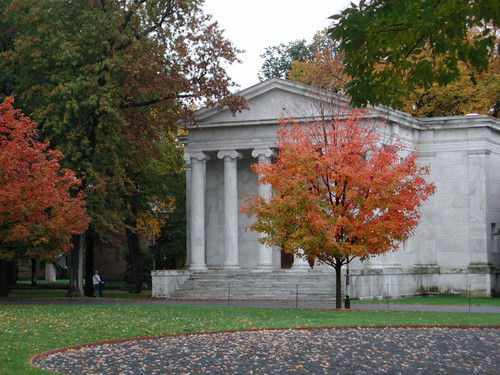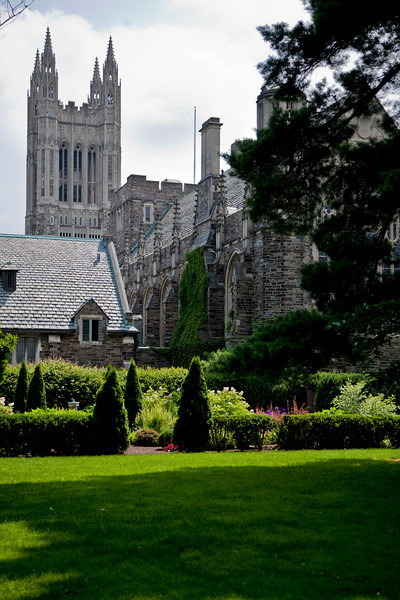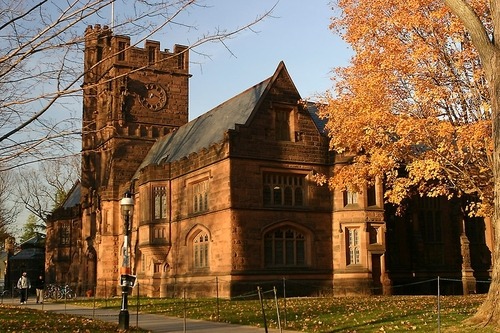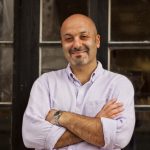Spotlight: Fellowship Opportunities at Princeton University’s Lewis Center for the Arts
Learn About Two Artist Fellowships Available at Princeton University
The Lewis Center for the Arts at Princeton University offers two artist fellowship opportunities, both designed to support artists in all artistic disciplines who demonstrate great promise. Fellowships in the Creative and Performing Arts are open to early-career artists whose achievements have been recognized as demonstrating extraordinary promise. Fellows are appointed as lecturers for two 10-month academic years at a salary of $77,000 salary per year. The Hodder Fellowships are open to artists demonstrating “much more than ordinary intellectually and literary gifts,” and artists are selected “for promise more than performance.” Hodder Fellows spend an academic year at Princeton, but no formal teaching is involved. A $77,000 stipend is provided for this 10-month appointment. NYFA spoke with Michael Cadden, Chair of the Lewis Center, to learn more about these opportunities and what artists should consider when applying.
NYFA: The Fellowships in the Creative and Performing Arts are two-year fellowships that include teaching and/or other artistic assignments, while the Hodder Fellowships are for one year and enable artists to pursue independent projects. In what other ways are these two fellowships similar or different?
MC: The Hodder Fellowship is all about the work, past and future. We don’t interview finalists for the Hodder because their fellowship year is meant to be spent working on a project in an atmosphere of “studious leisure.” They are being given the freedom to lay low. The Fellows in the Creative and Performing Arts – we call them PAFs (Princeton Arts Fellows)—are expected to be actively involved in the Princeton community. Though they too are selected on the basis of their work, they must also demonstrate the desire and the ability to bring others into their process. The PAFs choose how they want to engage with the community; for example, they might teach a seminar or workshop, direct a play, choreograph a dance, compose music for student performers, or work with our students in other ways.
NYFA: How can artists determine which fellowship is the right one to which they should apply?
MC: You can only apply twice in a lifetime to be a PAF; there’s no limit how many times you can apply for the Hodder. Many people apply for both in a single year, which is not a problem. Not all artists may be interested in teaching undergraduates; those who are interested in serving on our faculty and working with our amazing students may want to consider the PAF program.
NYFA: The criteria for both fellowships require applicants to demonstrate extraordinary promise. In what ways can applicants effectively demonstrate that promise?
MC: Have some work out there in the world that has attracted some attention from fellow artists and from critics.
NYFA: What other characteristics or details do you look for in an application?
MC: For the Hodder, it’s crucial that the proposed project sound like something exciting and worth doing and that needs time to develop. For the PAF, we look for someone who can add to the artistic and intellectual community, either by teaching or directing or choreographing or working with students in another way. For both fellowships, we aim to choose artists at a “good moment” – at a time when it might be helpful to them to step away from the “busyness” of their lives to spend a year or two focused on their art.

NYFA: This year, the Fellowships in Creative and Performing Arts will be awarded to artists in dance, music, or visual arts, and the Hodder Fellowship is open to writers, composers, choreographers, visual artists, performance artists, or other kinds of artists. How are applicants from different disciplines compared to one another during the review process?
MC: The selection committee is made up of people from the Lewis Center Programs in Creative Writing, Theater, Dance, and Visual Arts, as well as the Department of Music and the Princeton Atelier. Many of these folks also consult with colleagues in their disciplines about promising applicants. Finalists are put forward by people from the various disciplines, then we all go away and do our homework. While there’s sometimes a need to explain how to read a resume in your field, by and large we don’t find the “comparative” bit difficult. Nor do people get territorial about their separate artforms or cookie-cutter-like in their criteria. For example, it’s understood that “Plays well with others” is not a requirement in all of the arts – some art happens in isolation and other work happens collaboratively, and we welcome both and all artistic practices.
NYFA: What makes an application stand out to the judging panel?
MC: The quality of the work, the ability to make a case for oneself, the evidence that the artist has begun to be noticed, and, for the PAFs especially, the likelihood that the artist will be a good fit at Princeton and a valuable addition to our community for two years.
NYFA: What should applicants consider when submitting samples of their work?
MC: While we’re willing to ask for more work from finalists, the initial application should stick to the guidelines and include what you think of as your best and most eye-catching work.
NYFA: What common mistakes do you see applicants make? Are there any suggestions you can give to help improve applications?
MC: It sounds silly, but do follow the instructions. For example, the Hodder Fellowship requires a description of the specific project you’ll be working on during your year at Princeton. A fair number of applicants neglect to write this description, assuming that the work speaks for itself. In those cases, we can’t consider the application at all because we don’t have enough information.
NYFA: Hodder Fellows do not have teaching requirements or other assignments. In what ways are they able to engage with the Princeton University community?
MC: Hodder Fellows make their own choices about how much they want to engage. Some are very active, working with students, faculty members, and folks from the greater Princeton community on a wide variety of projects. Others prefer to hunker down and enjoy the fact that the University is buying them the freedom to do nothing but their work. Most fall in the middle; they’re willing to be called upon but are focused on their project. Fellows from both programs have various opportunities to share meals and their work with one another and with other university folks.

NYFA: What have previous fellows accomplished after their time at Princeton, and how did their fellowship facilitate those achievements?
MC: We’re only in our second years of PAFs. Past Hodder Fellows have included poets John Berryman and Jane Shore, novelists Darryl Pinkney and Mona Simpson, playwrights Doug Wright and Tarrell McCraney, and a host of others. We knew them when. We bought them time.
NYFA: Can you tell us a little about the Lewis Center for the Performing Arts and how it contributes to the Princeton University community? How are these fellowships part of that contribution?
MC: The Lewis Center is the home of the Programs in Creative Writing, Theater, Dance, Visual Arts and the Princeton Atelier. Most of what we teach are “hands-on” studio courses in these disciplines, but we also mix in scholars in some of these areas – for example in dance, theater, performance studies and film history, theory and criticism – as they would otherwise not be found elsewhere at the University and they allow our students to think more contextually about what it was and is to be an artist. In keeping with Princeton’s identity, ours is a strictly undergraduate operation. Our fellowship programs bring to campus some of the energy, vision and innovation often provided by graduate students at other institutions, though our fellows are just a little further along in their careers. Ideally, they model for our students what it might be like to get from where they are as artists to where they’d like to be.
NYFA: If artists have questions about the application process, how can they reach you?
MC: Questions on the application process can be directed to our Fellowship Assistant, Ysabel Gonzalez at [email protected].
The application deadline for both fellowships is September 15, 2014. For more information about The Lewis Center for the Arts at Princeton University, visit their website.
Search NYFA’s job listings to find jobs in the arts at universities and other organizations. To find opportunities such as fellowships and grants, use NYFA’s online searchable database, NYFA Source.





